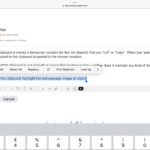Getting a tax refund can be exciting, and naturally, you’ll want to know when to expect your money. If you’re wondering “wheres my refund?”, you’re not alone. This guide will explain how tax refunds work and, more importantly, how to track your refund status using the IRS’s official tools.
Understanding Tax Refunds
A tax refund is issued when you’ve paid more in taxes throughout the year than you actually owe. This overpayment can happen for various reasons, such as having too much tax withheld from your paycheck or qualifying for tax credits. Even if you didn’t pay any taxes, you might still be eligible for a refund if you qualify for refundable tax credits. To receive any refund you may be entitled to, it’s essential to file a tax return. Remember, you generally have a window of 3 years to claim a tax refund.
Using “Where’s My Refund?” to Check Your Status
The fastest way to check on your refund after e-filing is by using the IRS tool called “Where’s My Refund?”. Typically, you can start checking your refund status online within about 48 hours after you e-file your tax return. This tool provides information for your current year’s refund and refunds from the past two years.
You can access the “Where’s My Refund?” tool directly on the IRS website:
Check your refund status with Where’s My Refund?
Checking the Status of an Amended Return
If you filed an amended tax return (Form 1040-X), the process and timeline are different. Amended returns generally take longer to process. It can take up to 3 weeks for your amended return to show up in the IRS system and up to 16 weeks for complete processing. To track the status of your amended return, use the dedicated tool:
Where’s My Amended Return?
Refund Timelines: When to Expect Your Money
The processing time for your tax refund can vary depending on how you filed your return. Here’s a general timeline:
- E-filed returns: Typically up to 21 days.
- Paper-filed returns: 4 weeks or more.
- Amended returns: 4 weeks or more, potentially up to 16 weeks.
Keep in mind that these are typical timelines. Your refund might take longer if your return requires corrections or further review by the IRS.
Choosing How to Receive Your Refund
The IRS offers several convenient ways to receive your tax refund. Choosing the right method can impact how quickly you get your money.
- Direct Deposit: This is generally the fastest and most secure way to receive your refund. You can have it deposited directly into your checking, savings, or even a retirement account. You even have the option to split your refund into up to three different accounts.
- Paper Check: The IRS can mail a paper check to the address provided on your tax return. Remember to notify the IRS if you’ve recently changed your address to avoid delays.
- Prepaid Debit Card: Some banks and card providers allow direct deposit to prepaid debit cards. Check with your provider to confirm compatibility and obtain the correct account and routing numbers.
- Mobile Payment Apps: Certain mobile payment apps also accept direct deposits, offering another convenient option.
- Traditional, Roth or SEP-IRA: You can even deposit your refund directly into an existing IRA account.
Addressing Issues with Your Refund
Sometimes, your refund might not be exactly as expected, or you might encounter problems. Here are some common issues and how to address them:
- Refund Amount is Different Than Expected: If your refund is less than you anticipated, it could be due to offsets for debts like unpaid taxes, student loans, or child support. The IRS will usually send a notice explaining any adjustments made to your refund.
- Missing or Destroyed Refund Check: If your paper check is lost, stolen, or damaged, you can request a replacement check from the IRS.
- Incorrect Account or Routing Number: If you entered incorrect banking information, immediately call the IRS at 800-829-1040 to try and stop the direct deposit. If the deposit has already been made to the wrong account, you’ll need to contact your bank to recover the funds.
- Paper Check Received Instead of Direct Deposit: This can happen if the bank account is not in your name, your spouse’s name, or a joint account, if your bank rejected the direct deposit, or if you requested more than three electronic refunds to a single account.
- Refund Received in Error: If you receive a refund that you were not entitled to, it’s important to promptly return it to the IRS.
Need Further Assistance?
“Where’s My Refund?” remains the best first stop for checking your refund status. It provides the most up-to-date information available. If you lack internet access, you can use the IRS automated refund hotline:
- Automated Refund Hotline (Current Year Refund): 800-829-1954
- Automated Refund Hotline (Amended Return): 866-464-2050
If you believe there’s an error with your refund, review “Where’s My Refund?” or your IRS online account for detailed information before contacting the IRS directly.
By using the “Where’s My Refund?” tool and understanding the refund process, you can stay informed about your tax refund and manage your expectations effectively.

